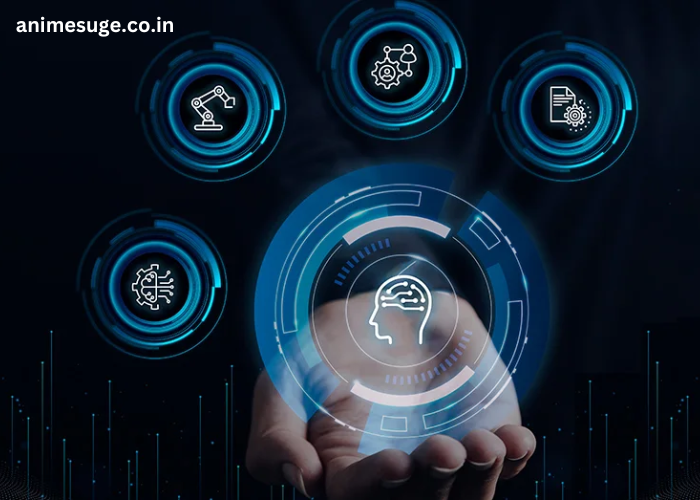Artificial Intelligence (AI) has become a cornerstone of modern innovation, reshaping industries and redefining the way we live and work. Among its most impactful applications is intelligent automation, a blend of AI and automation technologies designed to enhance efficiency, accuracy, and scalability across various domains. This article delves into the transformative power of intelligent automation, its components, and the opportunities it unlocks for businesses and society.
What is Intelligent Automation?
Intelligent automation refers to the integration of AI technologies such as machine learning (ML), natural language processing (NLP), and computer vision with traditional automation systems. Unlike rule-based automation, which follows pre-defined scripts, intelligent automation systems can analyze data, learn patterns, and make decisions with minimal human intervention.
This technology underpins various applications, from robotic process automation (RPA) enhanced by cognitive capabilities to sophisticated chatbots capable of understanding and responding to complex queries.
Core Components of Intelligent Automation
- AI Algorithms and Models: At the heart of intelligent automation are AI algorithms designed to analyze data, predict outcomes, and adapt to new inputs. Deep learning and reinforcement learning models are particularly significant in this realm.
- Robotic Process Automation (RPA): RPA automates repetitive, rule-based tasks. When augmented with AI, it evolves into a dynamic system capable of handling exceptions and adapting to changes.
- Natural Language Processing (NLP): NLP enables machines to understand, interpret, and respond to human language, making intelligent automation systems capable of interacting naturally with users.
- Computer Vision: By enabling machines to interpret visual information, computer vision enhances automation in areas like quality control, facial recognition, and autonomous navigation.
Applications Across Industries
- Healthcare: Intelligent automation powers diagnostic tools, automates patient record management, and streamlines workflows, enabling better patient care.
- Finance: From fraud detection to automated underwriting, intelligent automation revolutionizes financial operations by ensuring accuracy and speed.
- Manufacturing: Smart factories leverage AI-driven automation for predictive maintenance, supply chain optimization, and precision in production processes.
- Retail and E-commerce: Personalized product recommendations, inventory management, and automated customer service are reshaped through intelligent automation.
- Public Services: Government agencies use intelligent automation for citizen engagement, processing applications, and optimizing public resources.
Key Benefits of Intelligent Automation
- Efficiency: Automation minimizes manual intervention, allowing businesses to operate faster and more efficiently.
- Scalability: Intelligent systems adapt to increased demands without requiring proportional resource expansion.
- Cost Savings: Reducing errors and streamlining processes result in significant cost reductions.
- Enhanced Decision-Making: By analyzing vast datasets, AI provides actionable insights that drive informed decision-making.
- Improved Customer Experience: Personalized and responsive systems create a more satisfying user experience.
Challenges and Considerations
While intelligent automation offers numerous benefits, its adoption comes with challenges:
- Data Privacy and Security: Handling sensitive data responsibly is critical.
- Workforce Impact: Automation may displace jobs, necessitating upskilling and reskilling initiatives.
- Bias in AI Models: Ensuring fair and unbiased algorithms is essential for equitable outcomes.
- Integration Complexities: Implementing intelligent automation in legacy systems requires strategic planning.
The Future of Intelligent Automation
As AI continues to evolve, the potential for intelligent automation is boundless. Emerging trends such as hyperautomation, which combines multiple automation technologies for end-to-end processes, and edge AI, enabling real-time decision-making at the source, signal a future where automation becomes even more pervasive and intelligent.
For businesses, the key lies in embracing intelligent automation not as a replacement for human creativity but as a tool to augment capabilities and unlock new possibilities. By investing in the right technologies and fostering a culture of innovation, organizations can position themselves at the forefront of this transformative wave.
Intelligent automation is more than a technological advancement; it is a paradigm shift in how we work, interact, and innovate. Unlocking its potential requires a thoughtful approach, balancing innovation with responsibility, and leveraging its power to create a smarter, more efficient world.
